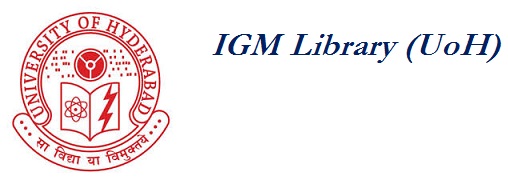Introduction to optics and lasers in engineering / Gabriel Laufer.
Laufer, Gabriel| Call Number | 621.36/6 |
| Author | Laufer, Gabriel, author. |
| Title | Introduction to optics and lasers in engineering / Gabriel Laufer. Introduction to Optics & Lasers in Engineering |
| Physical Description | 1 online resource (xvii, 476 pages) : digital, PDF file(s). |
| Notes | Title from publisher's bibliographic system (viewed on 05 Oct 2015). |
| Summary | In a very short time, lasers advanced from research interest to increasingly useful, commercially available tools for material processing, precision measurements, surgery, communication, and even entertainment. This 1996 book provides the background in theoretical physics necessary to understand engineering applications. It summarises relevant theories of geometrical optics, physical optics, quantum optics, and laser physics and ties them to applications in such areas as fluid mechanics, combustion, surface analysis, material processing and laser machining. Advanced topics such as laser Doppler velocimetry, laser-induced fluorescence, and holography are clearly and thoroughly explained. The book includes numerous examples and homework problems. A unique feature is the advanced research problems in each chapter that simulate real-world research and encourage independent reading and analysis. |
| Subject | Lasers in engineering. OPTICS. |
| Multimedia |
Total Ratings:
0
02174nam a2200373 i 4500
001
vtls001598873
003
VRT
005
20230127111600.0
006
m|||||o||d||||||||
007
cr||||||||||||
008
230127s1996||||enk o ||1 0|eng|d
020
$a 9781139174190 (ebook)
020
$z 9780521452335 (hardback)
020
$z 9780521017626 (paperback)
035
$a (UkCbUP)CR9781139174190
039
9
$y 202301271116 $z santha
040
$a UkCbUP $b eng $e rda $c UkCbUP
050
0
0
$a TA367.5 $b .L39 1996
082
0
0
$a 621.36/6 $2 20
100
1
$a Laufer, Gabriel, $e author.
245
1
0
$a Introduction to optics and lasers in engineering / $c Gabriel Laufer.
246
3
$a Introduction to Optics & Lasers in Engineering
264
1
$a Cambridge : $b Cambridge University Press, $c 1996.
300
$a 1 online resource (xvii, 476 pages) : $b digital, PDF file(s).
336
$a text $b txt $2 rdacontent
337
$a computer $b c $2 rdamedia
338
$a online resource $b cr $2 rdacarrier
500
$a Title from publisher's bibliographic system (viewed on 05 Oct 2015).
520
$a In a very short time, lasers advanced from research interest to increasingly useful, commercially available tools for material processing, precision measurements, surgery, communication, and even entertainment. This 1996 book provides the background in theoretical physics necessary to understand engineering applications. It summarises relevant theories of geometrical optics, physical optics, quantum optics, and laser physics and ties them to applications in such areas as fluid mechanics, combustion, surface analysis, material processing and laser machining. Advanced topics such as laser Doppler velocimetry, laser-induced fluorescence, and holography are clearly and thoroughly explained. The book includes numerous examples and homework problems. A unique feature is the advanced research problems in each chapter that simulate real-world research and encourage independent reading and analysis.
650
0
$a Lasers in engineering.
650
0
$a OPTICS.
776
0
8
$i Print version: $z 9780521452335
856
4
0
$u https://doi.org/10.1017/CBO9781139174190
999
$a VIRTUA
No Reviews to Display
| Summary | In a very short time, lasers advanced from research interest to increasingly useful, commercially available tools for material processing, precision measurements, surgery, communication, and even entertainment. This 1996 book provides the background in theoretical physics necessary to understand engineering applications. It summarises relevant theories of geometrical optics, physical optics, quantum optics, and laser physics and ties them to applications in such areas as fluid mechanics, combustion, surface analysis, material processing and laser machining. Advanced topics such as laser Doppler velocimetry, laser-induced fluorescence, and holography are clearly and thoroughly explained. The book includes numerous examples and homework problems. A unique feature is the advanced research problems in each chapter that simulate real-world research and encourage independent reading and analysis. |
| Notes | Title from publisher's bibliographic system (viewed on 05 Oct 2015). |
| Subject | Lasers in engineering. OPTICS. |
| Multimedia |

